
Purchase Tickets
Jumping into the fire: Mary Byrne and the Labyris
June 25, 2021
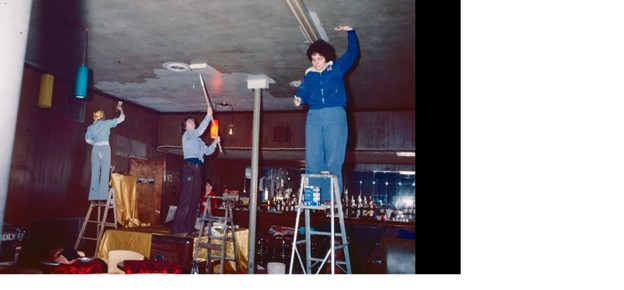
In an oral history interview she gave to the Indiana Historical Society in 2015 as part of the LGBTQ+ collecting initiative, Mary Byrne recalled, in looking back on her professional life, “I’m always jumping into the fire. I don’t know why I do that.”
And it’s true. Over her professional career, Byrne found herself jumping into many different fires for good of the cause: social worker, bookstore manager, non-profit executive director, spokesperson. However, it is perhaps that initial jump into the flames that set her on a trajectory: the purchase and operation of the Labyris in Indianapolis.
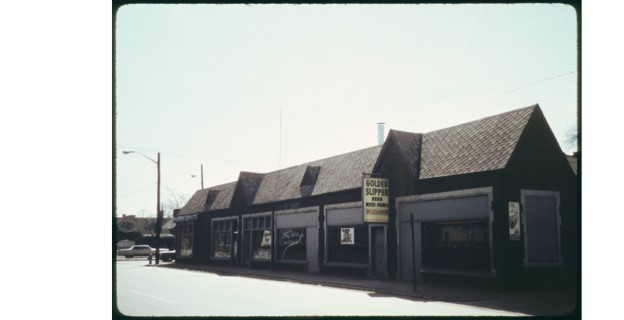
The space that would become The Labyris. Indiana Historic Preservation Commission Image Collection, Indiana Memory.
Upon her return to Indianapolis for her first professional job after college, Mary arrived in the city when feminist political consciousness was high, as women were working to ratify the ERA. However, outside of this space of activism, there wasn’t really a place where women could safely gather to form community and relationships (both romantic and platonic) as well as to have a platform for their creative and artistic pursuits. Somehow, Byrne found herself jumping in to meet that need. After quitting her job as a social worker, Mary worked as a manager at a Waffle House, took a bartending course, and tended bar to learn the ropes of the business. Then, in March 1979, she bought a bar on Michigan Street called the Lockerbie Lounge and the Labyris was born.

Special guest pass for the Labyris. Indiana Historical Society
Byrne named her bar the Labyris after the mythological double axe because it is a symbol of the matriarchy. In order to keep the bar a safe space for women, she developed a membership program and required that all men had to be accompanied by a woman in order to gain entrance. Perhaps most notably and most telling about how dedicated Byrne was to her cause of community building is the monthly newsletter and calendar she sent out to her membership list, which grew in readership over the years.
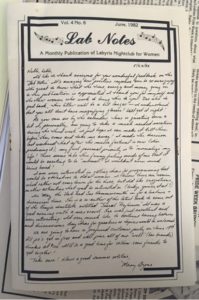
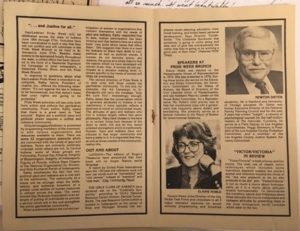
“Lab Notes” was sent out once a month and included a personal note from Mary Byrne as well as a calendar of events for patrons. Indiana Historical Society.
The Labyris was absolutely a space for women to relax, socialize, and form relationships, but it was also a place for women to gain confidence in their creative pursuits and their political consciousness. There were regular open mic nights for musical performances and poetry, appearances by national artists in the women’s music scene, and an arts & crafts market at the holidays. There were nights reserved for writing letters to Congress on women’s and LGBTQ+ issues, fundraisers for Indiana NOW, and discussions of racism and classism within the lesbian community. In the early days after Title IX passed, Byrne wrote her patrons regular reminders to turn out and support women’s sports at the high school and collegiate levels.
Although the Labyris shut its doors in 1984, Byrne’s experience building a community that was growing in their political and social consciousness, provided the foundation and lessons she would carry with her out of one fire and straight into another during her professional career, as she became a spokesperson for the Greater Indianapolis Fairness Alliance and the Executive Director of Indiana Youth Group, an organization which serves LGBTQ+ youth.
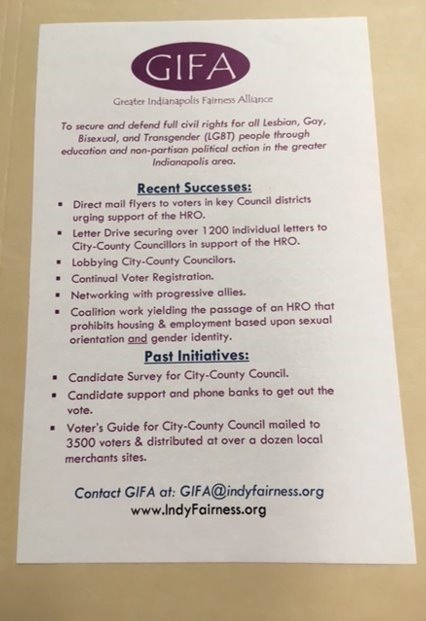
The Greater Indianapolis Fairness Alliance was formed to encourage the passage of a Human Rights Ordinance at the Indianapolis City-County Council in the early 2000s. Indiana Historical Society
Mary Byrne’s story is just one of many we have collected through our ongoing LGBTQ+ collecting initiative. Some of the images, documents, and oral history transcripts in our collections can be viewed in our Indiana LGBTQ+ Digital Image Collection.
Wishing everyone a very happy Pride Month!









